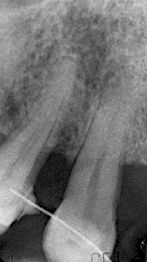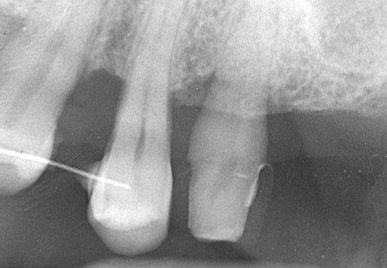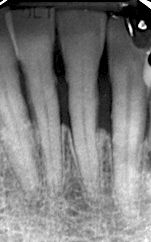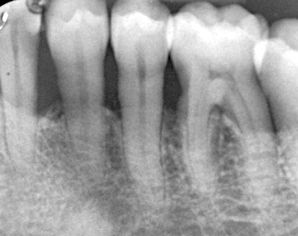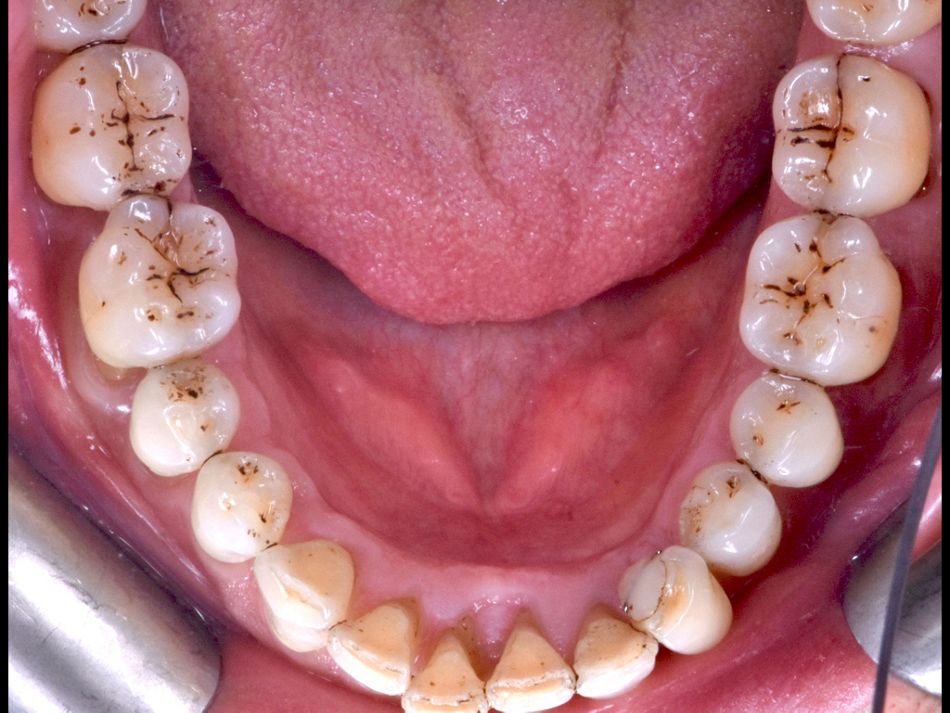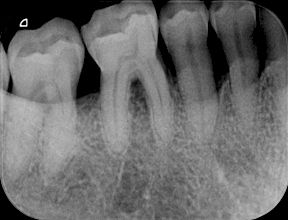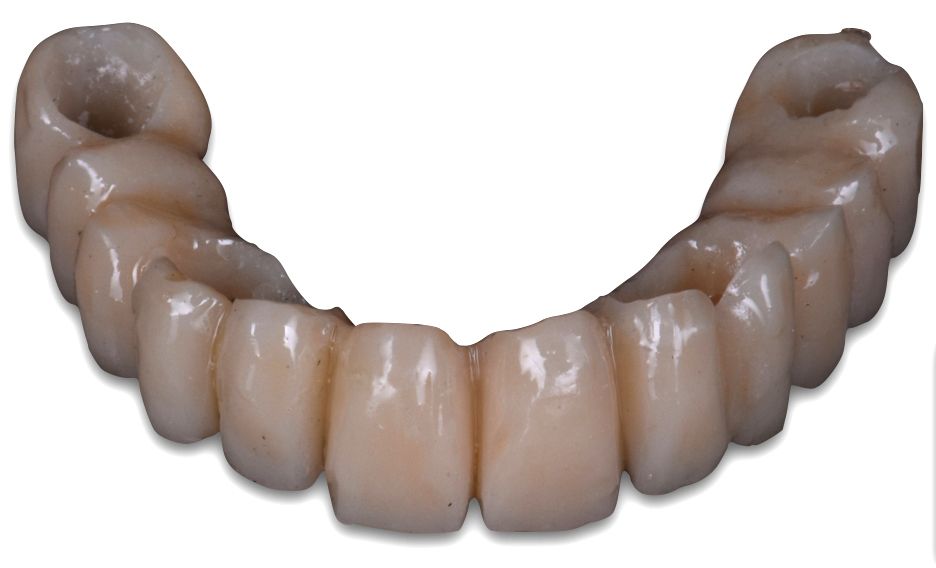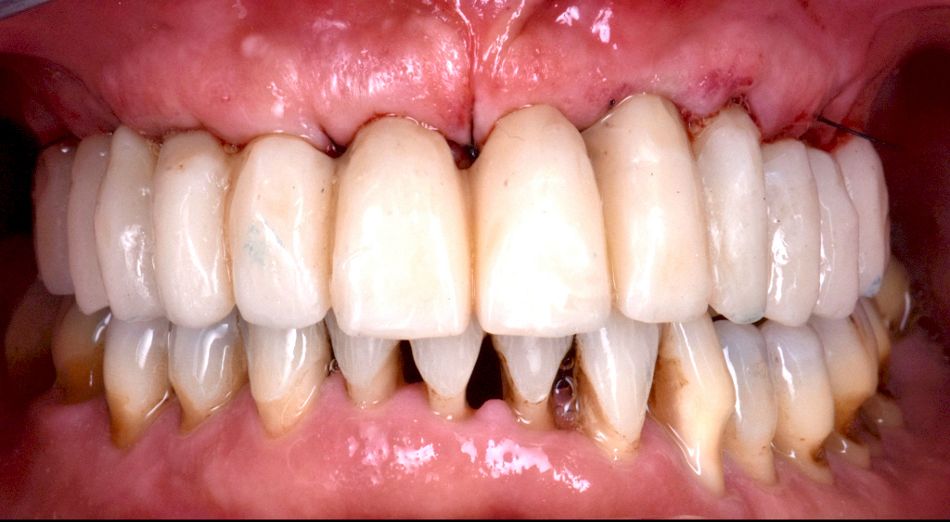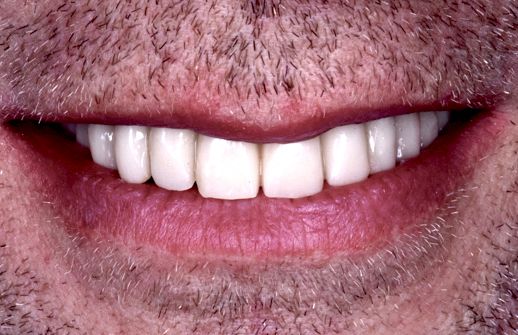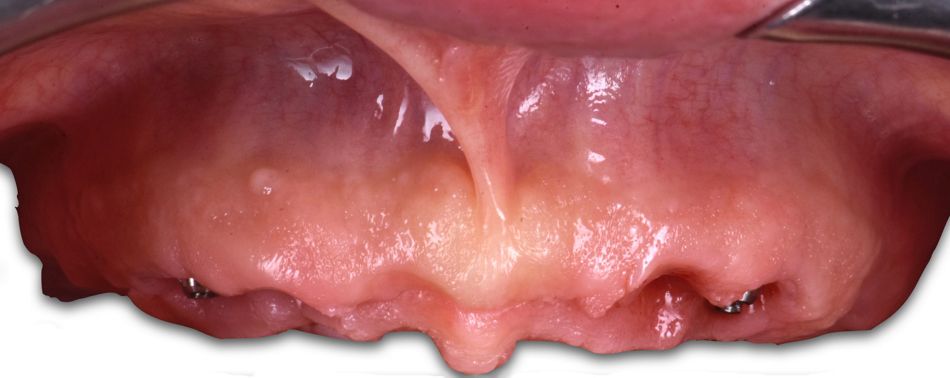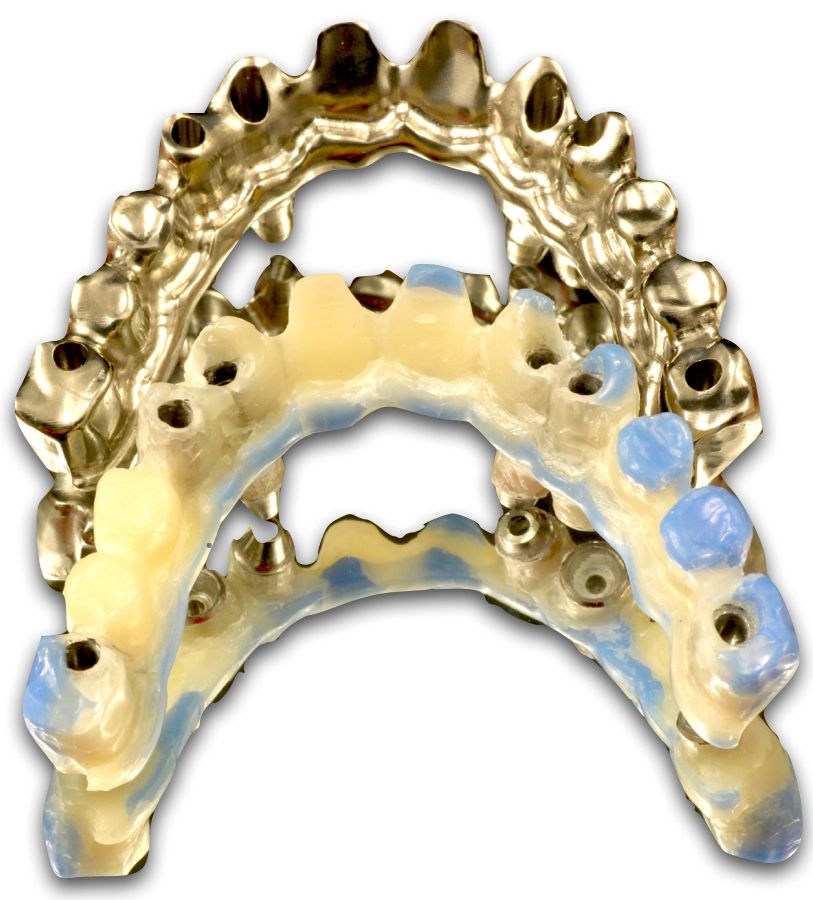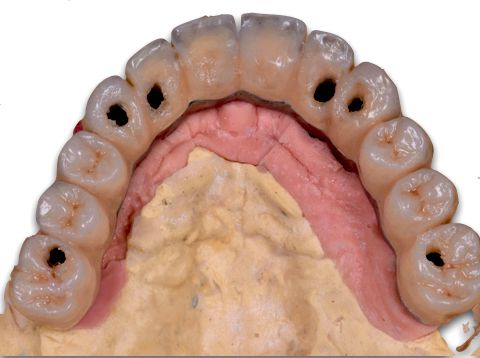Initial situation
The patient was a 53-year-old male non-smoker at the time of treatment, although with a history of heavy smoking for many years before treatment (Figs. 1-3). General health conditions were good, but the patient suffered from a severe chronic periodontitis, probably with a juvenile onset (Figs. 4,5). A periodontal chart and x-ray periodical status were checked to assess the severity of periodontitis and the therapeutic prognosis (Fig. 5). Only nine teeth were remaining in the maxilla after previous extractions. Mobility, migration of teeth and lack of vertical dimension of occlusion were observed. Most of the maxillary teeth were splinted to improve function (Fig. 6). The mandible was in a better condition, with the preservation of all natural teeth, no restorations and with minor mobility and migration (Fig. 7). Before any implant-borne reconstruction was considered, periodontal treatment was provided in order to obtain the necessary biologic condition and patient compliance for long-term implant survival. The treatment was finalized in 2016 (Figs. 8,9).
Treatment planning
The treatment plan included the placing of six implants in the maxilla (Straumann® BLT, 4.1mm diameter, 12mm length, Roxolid® SLActive®), followed by full reconstruction of the entire jaw (Figs. 10-13). The planned implant placement modality was type 1 (immediate, post-extraction) and the planned loading modality was immediate loading. Lab staff received treatment planning in preparation for surgery.
Surgical procedure
Prior to the surgery, the patient was instructed in intra-oral professional hygiene and in a mouth rinsing protocol. Antibiotic prophylaxis (amoxicillin 800 mg and clavulanic acid 200 mg) was also prescribed. Next, all the remaining teeth in the maxilla were extracted (Fig. 14), and a prosthetic guide was used to check its stability and correct orientation and congruity with the lower jaw (Figs. 15,16). A full-thickness flap was raised to expose all recipient sites. A bone remodeling procedure was performed to remove thin parts of alveolar bone from the extraction sockets. Using the prosthetic guide, implant beds were prepared according to the pre-surgical planning (Figs. 17,18). Next, six Straumann® BLT implants (Roxolid® SLActive®) were placed (Figs. 19,20). Two tilted implants in the posterior maxilla were specifically used to avoid a sinus lift procedure and achieve very high primary stability. There was no need to use any biomaterials or bone grafting procedures. After implant placement, titanium bridges and a temporary abutment were placed, and primary closure of the flaps was obtained with a single suture (Fig. 21).
Prosthetic procedure
In accordance with our immediate loading protocol, a prosthetic surgical guide was used as an impression tray. This atypical impression was made directly using a titanium temporary abutment as an impression transfer. A self-curing resin was injected to block abutments to the guide. (Figs. 22,23) A full-arch temporary bridge was then delivered and stabilized in the patient’s mouth (Figs. 24,25). The patient was recalled after three days, one week and one month for suture removal, adjustment of occlusal contacts and a general check-up (Figs. 26,27).
Final result
After a period of osseointegration (about six weeks) (Fig. 27) and complete soft tissue remodeling and stabilization (Figs. 29,30), the temporary denture was removed and replaced with the final one. The final restoration was produced based on the data acquired for preparation of the temporary bridge (Figs. 31-35). Occlusion, esthetics, phonetics and hygienic maintenance possibilities were investigated at the moment of final restoration and confirmed to be appropriate (Fig. 36). A final panoramic x-ray with a final prosthetic superstructure in place was also recorded to serve as a baseline for the follow-up controls (Fig. 37). At the 12-month follow-up visit, the patient was checked with regards to the general hygienic maintenance of the denture, any bone resorption, phonetics, function and esthetics. A new peri-apical x-ray was also taken to investigate the periodontal and peri-implant situation (Figs. 38-41).
Conclusions
No complications or adverse situations were observed at any time during the treatment, from the planning to the final prosthetic installation. The patient was extremely satisfied with his new denture. Overall, the treatment required a relatively low number of appointments, with just a single surgical session. An immediate replacement of natural dentition in the upper jaw with an implant-supported full-arch bridge was achieved in a controlled and planned way, minimizing the risks and potential patient discomfort. The patient appreciated the immediate loading approach, since it enabled him to maintain a “fixed teeth” situation and avoid a removable denture stage during the osseointegration period.












